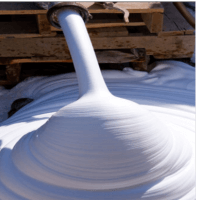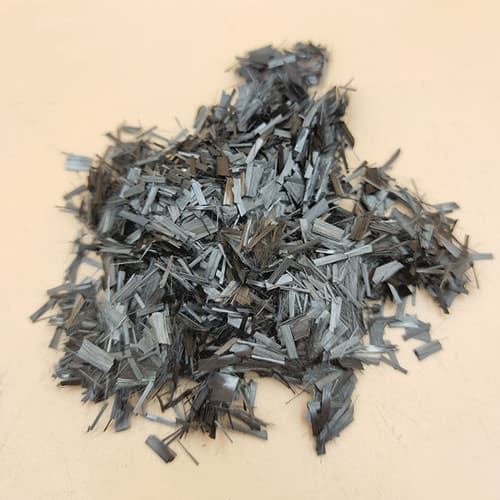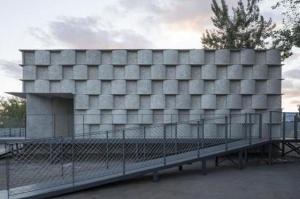Professional solutions on concrete addtives, Concrete Foaming Agent, Superplasticizer, CLC Blocks Additives, and foaming machine
(3-12 Kinds of Concrete Additives Used in Refractory Castable, Plastic and Ramming Materials (3))
The properties and varieties of concrete additives for refractories, especially refractory castables, ramming materials, plastics and other amorphous refractories are different. The role of an concrete additive is also different due to the difference of the amount of concrete additive, the type of binder used, the ingredients and so on. In the production process of amorphous refractories, the concrete additives mainly used can be divided into the following twelve categories according to their uses:
9. Defoamer
Defoamer can quickly escape the bubbles produced by amorphous refractories during mixing or vibration molding. Defoamer is also a surface active substance, and its ability to reduce liquid surface tension is much stronger than that of foaming agent. The strength of the formed liquid film is greatly reduced, the foam loses its stability, and the spreading speed on the liquid surface is faster, the faster the spreading speed is, the stronger the defoaming effect is. The types of defoamers include alcohols, fatty acids and fatty acid salts, organosilicon compounds and so on.
10. Anti-shrinkage agent
Anti-shrinkage agent can reduce or prevent the shrinkage caused by heating and use of refractories after forming, also known as volume stabilizer or expansive agent. Its anti-shrinkage principle is:
Thermal decomposition:
The anti-shrinkage agent will be pyrolyzed after high temperature heating, and the molar volume of the product is larger than that of the original material before pyrolysis, thus compensating the sintering shrinkage of the material. Such as kyanite anti-shrinkage agent.
Chemical reaction:
After high temperature chemical reaction, the molar volume of the new phase is larger than that of the original reaction phase, thus the sintering shrinkage can be compensated. If α-Al2O3 is added to magnesia castables as anti-shrinkage agent, the volume expansion effect can be produced by the formation of alumina-magnesia spinel by high temperature reaction. For example, the bonded clay or silica powder is added to the high alumina castable to compensate the sintering shrinkage by the volume expansion effect of mullite produced at high temperature.
Crystal transformation:
The added anti-shrinkage agent can not only change the crystal form of expansion in the process of high temperature heating, but also compensate the shrinkage of sintering. For example, in aluminosilicate castable or plastic, an appropriate amount of silica powder is added to compensate the sintering shrinkage of the matrix with the help of the volume expansion when quartz is transformed into cristobalite or cristobalite.
11. Preservation agent
The preservation agent can keep the construction performance unchanged or unchanged after the amorphous refractories are stored for a certain period of time. For example, Al2O3-SiO2 series refractory plastics and ramming materials, which are usually combined with phosphoric acid or aluminum dihydrogen phosphate, will react with Al2O3 in the material to form insoluble aluminum orthophosphate, which makes the mixture dry prematurely and lose its workability. Therefore, it is necessary to add a concealer which can form a complex with Al3+ ion to inhibit the formation of insoluble aluminum orthophosphate and prolong the shelf life. The preservatives used for plastics and ramming materials combined with phosphoric acid or aluminum dihydrogen phosphate are oxalic acid, citric acid, tartaric acid and so on. Sulfonic salicylic acid and dextrin also have the role of preservative.
12. Inhibitor
Inhibitors can inhibit the expansion caused by the reaction of iron and iron compounds in amorphous refractories with acidic chemical binders, so it is also called anti-expansion agent. When acidic chemical binders (such as phosphoric acid, aluminum dihydrogen phosphate, aluminum sulfate, aluminum chloride and polyaluminum chloride, etc.) are used as binders, the mixture generally needs to go through trapped materials. in order to make the acid binder fully react with the metal iron or ferrous compounds contained in the mixture to release hydrogen, otherwise it will produce expansion and make the material become loose and porous and the strength decreases. If it is used directly without trapping material, an inhibitor must be added. Inhibitor is a kind of complexing agent, which can react with metallic iron to form a complex, which can inhibit expansion. These inhibitors include CrO3, diacetone alcohol, ferric phosphate and so on.
Concrete Additives Supplier
TRUNNANO is a reliable concrete additives supplier with over 12-year experience in nano-building energy conservation and nanotechnology development.
If you are looking for high-quality concrete additives, please feel free to contact us and send an inquiry. (sales@cabr-concrete.com)
We accept payment via Credit Card, T/T, West Union, and Paypal. TRUNNANO will ship the goods to customers overseas through FedEx, DHL, by air, or by sea.
(3-12 Kinds of Concrete Additives Used in Refractory Castable, Plastic and Ramming Materials (3))







